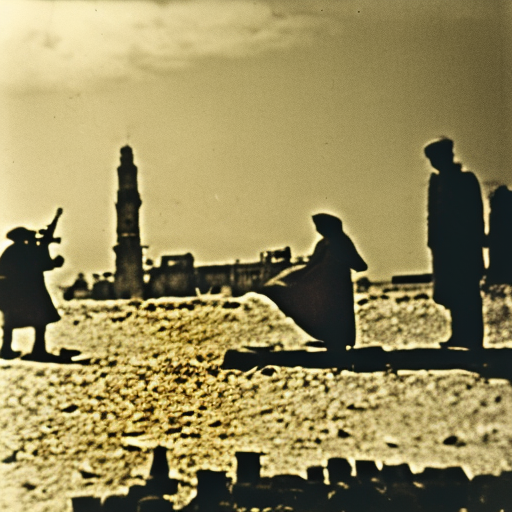Summary:
The 1947-1949 Palestine war, also known as the 1948 Arab-Israeli War or the War of Independence, was a conflict that occurred in the aftermath of the United Nations’ decision to partition Palestine into separate Jewish and Arab states. The war involved various Arab states, including Egypt, Jordan, Syria, and Iraq, against the newly established state of Israel. The conflict resulted in significant territorial changes and had a lasting impact on the region’s political landscape.
Background:
The roots of the Palestine war can be traced back to the early 20th century when tensions between Jewish and Arab communities in Palestine began to escalate. The British Mandate for Palestine, established after World War I, further exacerbated these tensions. In 1947, the United Nations proposed a partition plan that would divide Palestine into separate Jewish and Arab states, with Jerusalem under international administration. While the Jewish community accepted the plan, the Arab states and Palestinian Arab leaders rejected it, leading to the outbreak of violence.
Outbreak of War:
The war officially began on May 15, 1948, when the British Mandate expired, and the state of Israel declared its independence. Arab forces from neighboring countries immediately launched attacks on the newly established state. The Israeli forces, although outnumbered and initially poorly equipped, managed to repel the Arab advances and even gained control over territories beyond the proposed Jewish state outlined in the UN partition plan.
Key Battles and Events:
- Battle of Jerusalem: One of the most significant battles of the war was the Battle of Jerusalem. Israeli forces managed to break the siege on the Jewish Quarter of the Old City and ultimately gained control over West Jerusalem.
- Operation Danny: This Israeli offensive aimed to secure the road between Tel Aviv and Jerusalem. Israeli forces successfully captured several Arab towns along the route, strengthening their position in the region.
- Operation Yoav: This military operation focused on securing the Negev region. Israeli forces managed to drive out Egyptian forces from the area, gaining control over the southern part of the country.
- Arab Liberation Army: The Arab Liberation Army, composed of volunteers from various Arab countries, played a significant role in the conflict. However, their lack of coordination and infighting weakened their overall effectiveness.
Outcome:
The war ended in 1949 with the signing of armistice agreements between Israel and its neighboring Arab states. The armistice lines, known as the Green Line, established the borders between Israel and Jordan, Egypt, Syria, and Lebanon. The war resulted in significant territorial changes, with Israel gaining control over more territory than originally proposed in the UN partition plan. Approximately 700,000 Palestinian Arabs became refugees as a result of the conflict.
Impact:
The Palestine war had a profound impact on the region. It led to the displacement of hundreds of thousands of Palestinian Arabs, creating a long-standing refugee issue. The war also solidified Israel’s position as a state and shaped its future policies and relations with neighboring countries. The conflict set the stage for subsequent Arab-Israeli wars and ongoing tensions in the region. The status of Jerusalem, a key point of contention during the war, remains a central issue in the Israeli-Palestinian conflict to this day.












